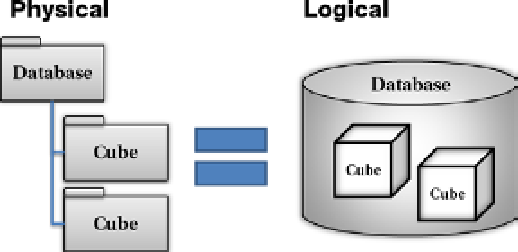Database Reference
In-Depth Information
Figure 9-1.
Anatomy of a SQL Server database
Analysis Server's structure is much different. In SSAS, each database is stored as a hard drive folder,
not a master data file. This database folder contains a collection of files and subfolders that are the physical
representation of the cubes and dimensions of that particular database (Figure
9-2
). Each SSAS database can
have many cubes and dimensions. And one Analysis Server can host many databases.
Figure 9-2.
Anatomy of a Analysis Server database
In both cases, the main purpose is to store data in logical collections called
tables
or
cubes
, respectively.
Note, however, that SSAS databases lack transactional logging. SSAS databases are focused on storing and
retrieving data, with little to no transaction processing. Most of the data you find in a cube is copied from
relational tables, and once copied, they never change.
The act of copying the data from the relational database to the cube database is called
processing
. Processing
collects data from one or more tables, places a copy of that data into the cube, and optionally creates stored
aggregate values as well. This means a cube can be thought of as a set of tables combined into a single reporting
object, as you can see demonstrated in Figure
9-3
.


